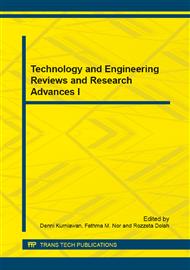p.3
p.8
p.13
p.19
p.26
p.31
p.36
p.41
Effect of Chitosan-Grafted-Poly (Methyl Methacrylate) Content on Mechanical Properties and Thermal Degradation of Poly (Vinyl Chloride) Composites
Abstract:
The graft copolymerization was carried out under nitrogen atmosphere using the free radical initiation technique. The blend formulations were first dry blended using a mixer before being milled into sheets on a two-roll mill at 170°C, and then hot pressed into composites specimens at 175°C for 10 min. The objective of this study to investigate the mechanical and thermal properties of PVC blends. The flexural strength and modulus of ungrafted composites increased with increasing filler content from 2 to 10 part per hundred resin (phr) while the grafted composites also increased only from 2 to 6 phr filler content. The flexural modulus of ungrafted was higher compared to the grafted composites whereas the grafted showed good flexural strength than ungrafted composites. The impact strength of both composites decreased with increasing filler content but the ungrafted composites showed good toughness than grafted composites. The thermal stability of both composites increased compared to unfilled PVC.
Info:
Periodical:
Pages:
3-7
Citation:
Online since:
February 2015
Authors:
Price:
Сopyright:
© 2015 Trans Tech Publications Ltd. All Rights Reserved
Share:
Citation:


